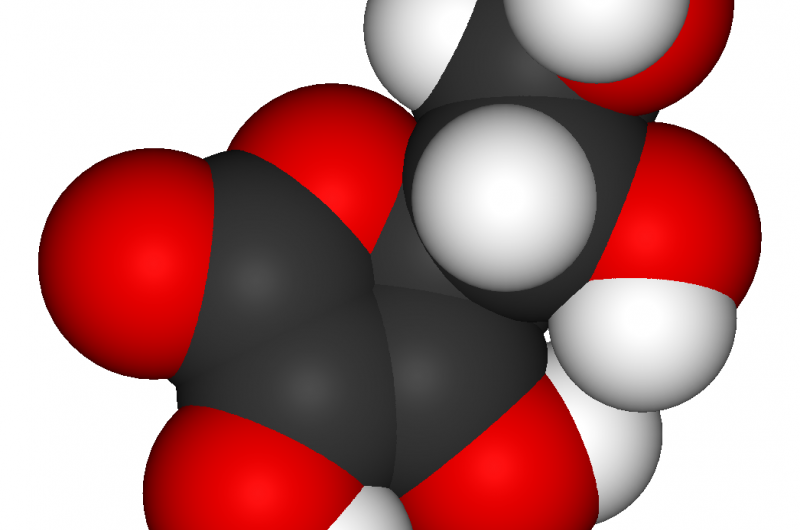Why high-dose vitamin C kills cancer cells

Vitamin C has a patchy history as a cancer therapy, but researchers at the University of Iowa believe that is because it has often been used in a way that guarantees failure.
Most vitamin C therapies involve taking the substance orally. However, the UI scientists have shown that giving vitamin C intravenously—and bypassing normal gut metabolism and excretion pathways—creates blood levels that are 100 - 500 times higher than levels seen with oral ingestion. It is this super-high concentration in the blood that is crucial to vitamin C's ability to attack cancer cells.
Earlier work by UI redox biology expert Garry Buettner found that at these extremely high levels (in the millimolar range), vitamin C selectively kills cancer cells but not normal cells in the test tube and in mice. Physicians at UI Hospitals and Clinics are now testing the approach in clinical trials for pancreatic cancer and lung cancer that combine high-dose, intravenous vitamin C with standard chemotherapy or radiation. Earlier phase 1 trials indicated this treatment is safe and well-tolerated and hinted that the therapy improves patient outcomes. The current, larger trials aim to determine if the treatment improves survival.
In a new study, published recently in the December issue of the journal Redox Biology, Buettner and his colleagues have homed in on the biological details of how high-dose vitamin C (also known as ascorbate) kills cancer cells.
The study shows that vitamin C breaks down easily, generating hydrogen peroxide, a so-called reactive oxygen species that can damage tissue and DNA. The study also shows that tumor cells are much less capable of removing the damaging hydrogen peroxide than normal cells.
"In this paper we demonstrate that cancer cells are much less efficient in removing hydrogen peroxide than normal cells. Thus, cancer cells are much more prone to damage and death from a high amount of hydrogen peroxide," says Buettner, a professor of radiation oncology and a member of Holden Comprehensive Cancer Center at the University of Iowa. "This explains how the very, very high levels of vitamin C used in our clinical trials do not affect normal tissue, but can be damaging to tumor tissue."
Normal cells have several ways to remove hydrogen peroxide, keeping it at very low levels so it does not cause damage. The new study shows that an enzyme called catalase is the central route for removing hydrogen peroxide generated by decomposing vitamin C. The researchers discovered that cells with lower amounts of catalase activity were more susceptible to damage and death when they were exposed to high amounts of vitamin C.
Buettner says this fundamental information might help determine which cancers and which therapies could be improved by inclusion of high-dose ascorbate in the treatment.
"Our results suggest that cancers with low levels of catalase are likely to be the most responsive to high-dose vitamin C therapy, whereas cancers with relatively high levels of catalase may be the least responsive," he explains.
A future goal of the research is to develop methods to measure catalase levels in tumors.
More information: Claire M. Doskey et al, Tumor cells have decreased ability to metabolize H2O2: Implications for pharmacological ascorbate in cancer therapy, Redox Biology (2016). DOI: 10.1016/j.redox.2016.10.010


















